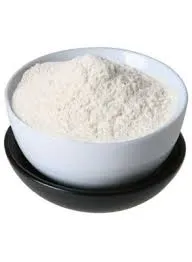
Oct . 16, 2024 00:26 Back to list
Is HPMC Dissolvable in Water and What Are Its Solubility Properties
Understanding the Solubility of HPMC in Water
Hydroxypropyl Methylcellulose (HPMC) is an important cellulose derivative widely used in various industries, including pharmaceuticals, food, cosmetics, and construction. One of the critical attributes of HPMC that impacts its utility in these sectors is its solubility in water. This article aims to explore the solubility characteristics of HPMC, its relevance in practical applications, and the factors affecting its dissolution.
What is HPMC?
HPMC is a semi-synthetic polymer derived from cellulose, a natural polymer obtained from plant cell walls. It is produced by the etherification of cellulose with hydroxypropyl and methyl groups, which enhances its properties significantly. HPMC appears as a white powder and is known for its ability to form gels and films when mixed with water. Its chemical structure contributes to its water-soluble attributes.
Solubility in Water
When discussing whether HPMC is soluble in water, the straightforward answer is that it is indeed soluble. However, the extent of its solubility can depend on several factors, including the degree of substitution, molecular weight, and the temperature of the water.
1. Degree of Substitution The ratio of hydroxypropyl and methyl groups to the base cellulose chain affects HPMC's solubility. Generally, a higher degree of substitution increases water solubility. HPMC grades with varying substitution levels exist to meet specific solubility requirements in different applications.
2. Molecular Weight HPMC is available in various molecular weights, from low to high. Lower molecular weight HPMC dissolves more easily in water, forming a viscous solution. In contrast, higher molecular weight grades may require more time to dissolve and can produce thicker gels.
3. Temperature The solubility of HPMC in water also increases with temperature. When heated, water molecules move more vigorously, which can help break intermolecular forces and allow HPMC to dissolve more rapidly.
is hpmc soluble in water

4. Concentration The concentration of HPMC in water influences solubility as well. At higher concentrations, the solution may become more viscous, making it appear as though the polymer is not dissolving entirely. However, it is essential to recognize that HPMC is still soluble; the viscosity may simply make it less fluid.
Applications of HPMC
The solubility of HPMC in water is pivotal for its functionality across various applications
- Pharmaceuticals In the pharmaceutical industry, HPMC is used as a stabilizer, thickener, and emulsifier in drug formulations. Its ability to dissolve in water allows it to be used effectively in both oral and topical medications.
- Food Industry HPMC is commonly used as a food additive and thickener. Its solubility contributes to the texture and mouthfeel of various food products, including sauces, dressings, and baked goods.
- Construction In construction, HPMC serves as a binder and additive in cement-based products, improving their workability and adhesion. Its solubility ensures that it can be mixed easily with water to achieve the desired consistency.
- Cosmetics HPMC is also used in cosmetics for its thickening and film-forming properties. Its water solubility allows it to be incorporated into creams, lotions, and gels, enhancing their texture and stability.
Conclusion
In summary, Hydroxypropyl Methylcellulose is a highly versatile polymer that is soluble in water, influenced by factors such as degree of substitution, molecular weight, temperature, and concentration. Its solubility is critical to its effectiveness in various industries, providing essential functionalities in pharmaceuticals, food, construction, and cosmetics. As industries continue to innovate and require more complex formulations, understanding the solubility characteristics of HPMC will remain crucial for optimizing its use and expanding its applications.
-
Versatile Hpmc Uses in Different Industries
NewsJun.19,2025
-
Redispersible Powder's Role in Enhancing Durability of Construction Products
NewsJun.19,2025
-
Hydroxyethyl Cellulose Applications Driving Green Industrial Processes
NewsJun.19,2025
-
Exploring Different Redispersible Polymer Powder
NewsJun.19,2025
-
Choosing the Right Mortar Bonding Agent
NewsJun.19,2025
-
Applications and Significance of China Hpmc in Modern Industries
NewsJun.19,2025







